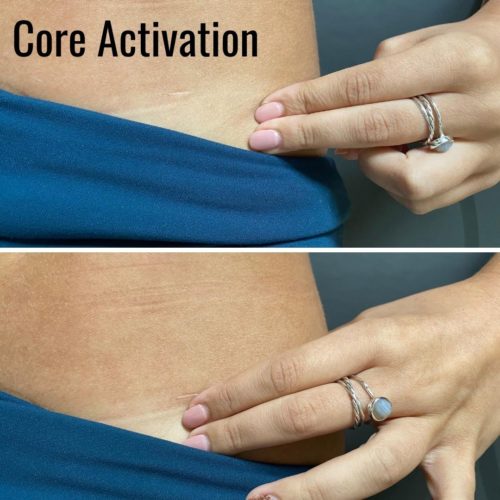Can Pilates help Bladder and Bowel Issues?
We talked to Physiotherapist and Founder of Actively Autoimmune, Zoe McKenzie to get her experience and advice for the Bladder and Bowel Community. Having a chronic illness doesn’t have to hold you back from exercise, and a big part of our conversation with Zoe followed pilates helped her to manage her own complex health conditions and led to her career as a physiotherapist, personal trainer and pilates instructor.
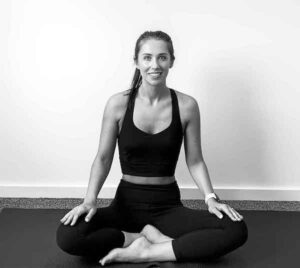
Later in the article, Zoe also kindly takes us through a range of exercises designed for all levels of fitness. We recommend speaking to your GP healthcare professional before trying these yourself.
How Pilates Helps Me Conquer My Bladder & Bowel Conditions
“I have been learning to live alongside multiple chronic health conditions and learning how to function with them for over 15 years. Following my diagnosis of Ehlers Danlos (a connective tissue disorder) at the age of 12 years, my early experiences of the impact of prescribed exercises, inspired me to be a physiotherapist. I found exercise helped me manage my condition, and I fell in love with Pilates, completing my Pilates training as soon as I graduated. After my Lupus diagnosis in 2017 I felt even more passionate to help others with chronic illnesses find a way to exercise that suits them, and I am now qualified as a personal trainer.
How I exercise has adapted and changed over the years depending on my health. Most recently it’s been my bladder and bowel that affects how I can move my body. In my late teens my bowel decided to slow down and now in my late twenties my gut dysmotility means I have a low tolerance of many foods, can only cope with small portions, live with constant nausea and rely on colonic irrigation to open my bowel. My bladder or more specifically my urethral sphincter decided to retire in 2017 and I now have to rely on my suprapubic catheter to empty my bladder, coping with pain, spasms and more pain.
Exercising With Bladder & Bowel Conditions
Everyone knows why exercise is so important; it has multiple physical and mental health benefits to help support your health and fitness. But what about when you are struggling with pain, dysfunction and fatigue? It can feel impossible to fit in a regular exercise routine. Plus many forms of exercise aren’t accessible, whether it’s too high intensity, or in a format or location where you don’t feel comfortable. Although we have nothing to feel ashamed of, it still isn’t ideal to share your bladder and bowel issues in front of a new gym instructor or have to worry where the nearest loo is all the time.
Finding a way to exercise that is something you enjoy and that suits your body is key. I believe we have enough stress just dealing with our conditions and the baggage that comes with them, without the extra pressure of feeling as though we ‘should’ exercise as depicted in social media, gyms and onscreen. Any movement counts – exercise isn’t just running, burpees and squats. It can be a slow walk, yoga in your pyjamas, strength work with 2kg dumbbells or 10 minutes of stretching in the morning. Exercise is a form of self-care, beneficial for our mind and body and it’s important to listen to your body and move it in a compassionate way.
Pilates For Bladder & Bowel Conditions
Pilates consists of low impact, flexibility, muscular strength and endurance movements to help with postural alignment, core strength and muscle balance. It can be practised with or without equipment, and what I love is that I can bring it right down to the basics or scale up the intensity for a professional athlete!
Pilates works your core stability muscles. The best way is to picture them as a cylinder of muscles around the inner surface of the abdomen, like a tin can around the abdominal contents. The core muscles create stability by using a ‘drawing in’ action from all sides of the cylinder. Normally, our core group of muscles automatically work together in a coordinated way to provide the support for every movement. However if any of the muscles in our core are weakened, lengthened, tight or injured, then this automatic action is altered. For example:
- Pain plays a big role in this, as it can have an inhibitory effect on surrounding muscles. So if you have had any sort of back, abdominal or pelvic pain this will change how your muscles work together, as well as how you breathe.
- Pelvic floor dysfunction, whether as a primary cause of dysfunction or secondary to the effect of your condition. For example those with overactive bladder tend to have a tight, high toned pelvic floor whereas others with incontinence may have a weak pelvic floor.
- External stress such as surgeries and procedures and relying on devices such as catheters or colostomy bags will also impact how our muscles work.”
Pilates Exercises
Lateral Breathing
How you breathe is so important as if you think back to the tin can, your diaphragm is strongly linked with your pelvic floor. How your diaphragm moves affects how your pelvic floor functions. Experiencing abdominal pain discourages us from taking deep breaths into stomach, so using the Pilates breath or lateral breath helps avoid this whilst still using your diaphragm
- Place your hands on the side of your chest
- Breathe in send your ribcage out to the side
- Breathe out let your ribs soften back in
Pelvic Floor Activation
It takes a while to build your awareness and if you are struggling don’t worry, up to 30% of people are unable to do it without seeing a pelvic floor physiotherapist.
- Squeeze your back passage, all the way forward and up. As if you are tucking your tailbone between your legs.
- Practice holding it for up to 10 seconds and then try and quickly contract/relax. Focus on fully relaxing it too, use your breath to let go in between contractions.
Core Activation
- Place your fingertips on your hip bones. Roll your fingers off the bone onto the inside and move down slightly into the ‘soft’ part. Let them sink into the muscle.
- On your next exhale, draw your belly button in towards your spine (you should feel a muscle tightening underneath your fingers)
- Now keep breathing, trying to hold on to this contraction. You should be able to talk and breathe normally whilst maintaining this, if you can’t you are probably gripping on too strongly, we are aiming for around a 4/10 intensity. The rest of your abdominal muscles should be relaxed

Pelvic Tilts
- Pop your hands on your hip and tilt your pelvis forwards, arching your back up and backwards, tucking your tailbone underneath you.
- Try and make the movement as smooth as possible, and then find the middle point which is ‘neutral spine’ which has the natural curves in your back.
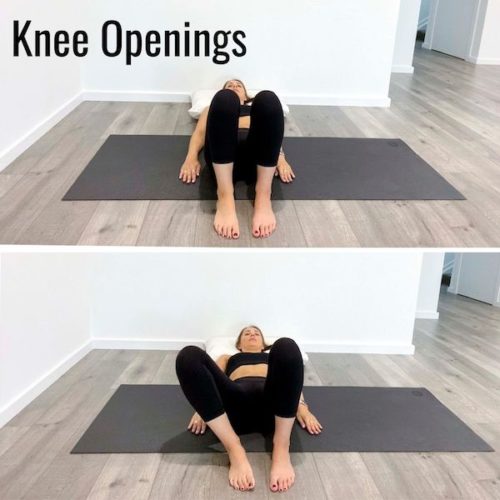
Knee Openings
- Lie on your back, knees bent, neutral spine with core engaged
- Inhale to prepare
- Exhale slowly draw one knee out to the side, keeping the other knee still
- Inhale return knee back to centre
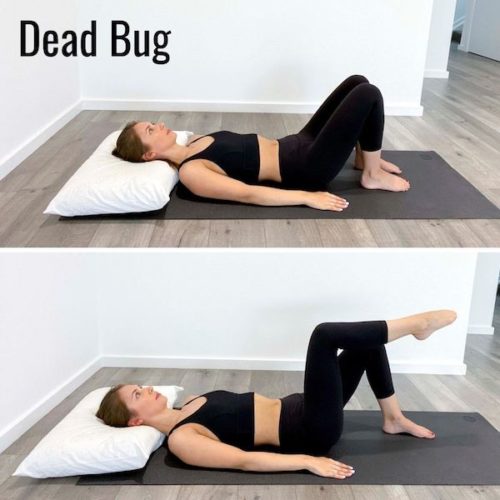
Dead Bug
- Lie on your back, knees bent, neutral spine with core engaged
- Inhale float one leg up to 90 degrees at hip and 90 degrees at knee
- Exhale to softly float shape down back to mat
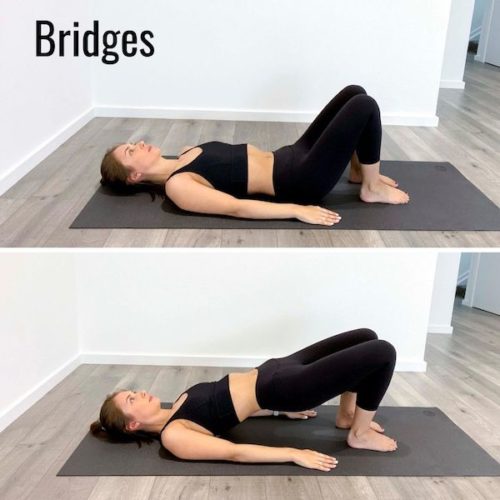
Bridges
- Lie on your back, knees bent, heels close towards your glutes, neutral spine and core engaged
- Exhale, gently roll the lower back into the mat, then lift tailbone up towards the ceiling
- Continue to peel your spine off the mat, bone by bone until you rest on your shoulder blade. Inhale hold.
- Exhale lower the shape down, drawing breastbone downwards towards mat and peel spine down bone by bone until tailbone reconnects with mat and spine returns to neutral
I hope these exercises have given you a taster of the type of movements that could be beneficial, either in isolation or combined with other forms of exercise.
For more information about Pilates and exercising with chronic health issues please visit www.activelyautoimmune.com

